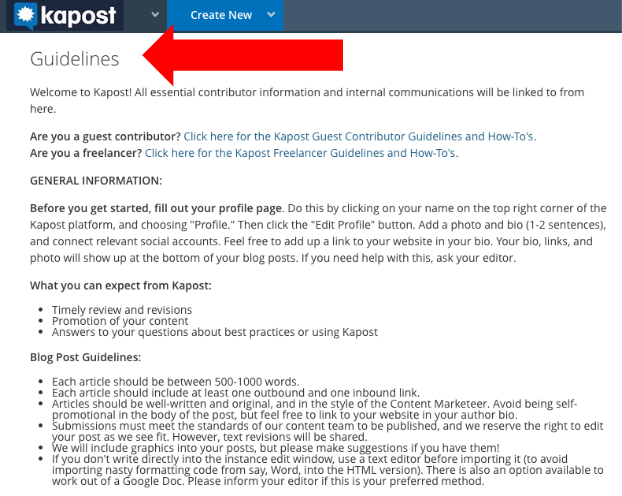Modern marketing is no easy thing to implement at a global B2B enterprise. You need to align and organize multiple product lines and departments scattered across the planet, manage ongoing deadlines that are sensitive to local time zones, cultures, and buyers, and maintain consistent messaging across cultural, geographic, and organizational boundaries.
Success requires engaging, consistent content. Lots of it. In fact, for some global organizations the sheer magnitude of content produced per quarter necessitates contract writers or freelancers to augment the process.
Heather Drugge, Go Communications
Heather Drugge is a fine example. Heather owns of Go Communications, a firm of writers who focus on writing articles for high-tech and biotech industries. Heather was hired to help manage one of Kapost’s enterprise biotech companies with their content operation and blog deliverables. It’s Heather’s job to oversee the ideation, creation, and daily publication of content to three distinct, yet highly scientific and technical blogs.
To do her job, Heather manages 14 freelance writers from various parts of the globe who, together, publish at least one final article per day of well researched, edited, and unique copy.
It’s not an easy task.
As with most global corporations, the type of content Heather’s content must reflect a complex network of staff and various internal departmental needs. Depending on the topic of the blog post and where it will be published, myriad internal employees partake in the content conversation and may be involved with things like approvals and legal matter reviews.
A simplified matrix of this complex process could look like the image below, in which 14 contributing writers produce content for three blogs, and five stakeholders oversee aspects of production.
It’s worth noting that five is a dramatic underestimation of the number of stakeholders involved in a marketing operation of a global company. It’s simply a visual representation.The diagram also doesn’t take into consideration visual content, editing process, ideation, or social promotion.
Doing Content Marketing Well
Content marketing can be a pain of time if managed recklessly. But developing succinct process, consistency, and a one-stop-shop for publication cuts time and increases productivity.
For instance, Heather says she saves 30% of her time managing staff and produces 3X the content in the same amount of time by using Kapost.
Heather uses the Kapost platform to align all of these moving marketing components.
- To communicate with freelancers
- To notify stakeholders and get them to sign off on approvals
- To produce content through various content contributors.
What’s Her Favorite Part of Kapost?
When asked her favorite part of the Kapost platform, Heather immediately pointed to the custom workflow and tasks functionality.
Custom workflows refer to the customizable processes that editors can develop within the platform. Each distinct content “type” can have a unique workflow or process that is consistent for the production of that piece time and again. For instance, editors can develop a custom workflow for the production of an eBook that might look very different from a workflow for a video.
Similarly, custom tasks automate communication to key stakeholders for each content in a customized way. Emails, or notifications, are sent to identified people at the right moment, ensuring that content tasks are completed when they are due, but don’t bother people when it’s not their turn to take action.
“We used to use three or four excel spreadsheets, but that doesn’t really work for a marketing operation at this size,” Heather says. She needs visibility in all content production, as well as who is accountable for what and when.
“Kapost is an excellent tool for anyone managing a lot of stories, many instances of blogs, and the company wants their buyer to have a common experience throughout,” Heather says.
Recap: How Heather Uses Kapost to Manage Freelancers
- Creates customized workflows for each type of content (such as a blog post, whitepaper, video, infographic, etc.) thereby automatically notifying appropriate internal stakeholders about their contribution at the right time.
- Organizes 14 writers from across the globe in one spot
- Automatically communicates with her global writers on new ideas, and creation
- Publishes to three distinct blog entities from one location
- Communicates to her primary stakeholders in each of the company’s departments
Kapost Tip: How to Manager Freelancers within the Tool
- Add each freelancer as a “contributor” or “editor” to Kapost
- Manage payment of freelancers based on publication task completion (which admins can manage from the Kapost dashboard)
- Integrate and sync each of your blogs with Kapost to make publication to various web properties as fast as a click
- Define/create specific content types relevant to each of your content needs (learn about content types here)
- Create custom workflows for each of your content types to align contributors, stakeholders, and key “sign-offers” (learn more about workflow customization here)
- Use Kapost’s “Guidelines” section to inform contributors on stylistic and branding guidelines to keep messaging consistent




